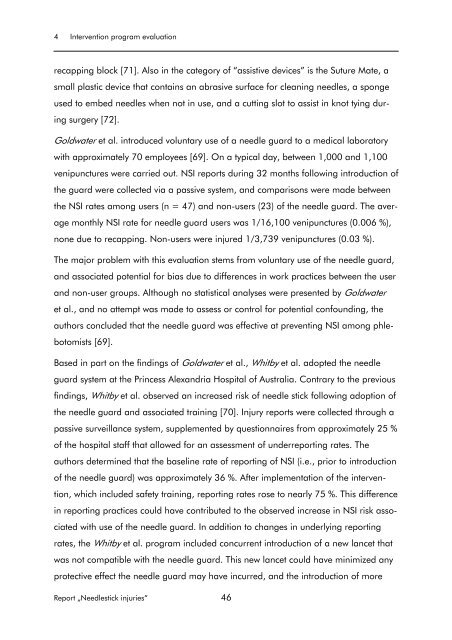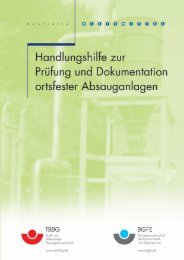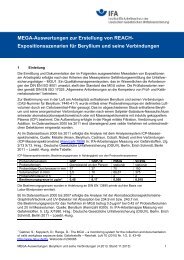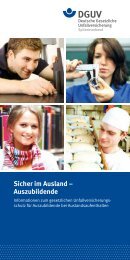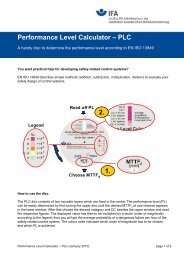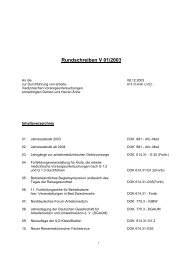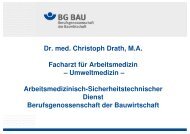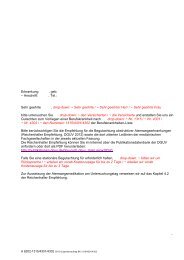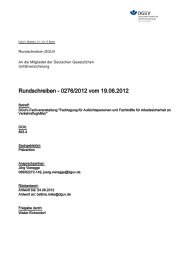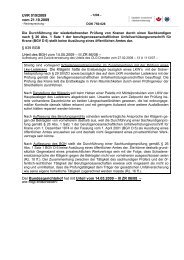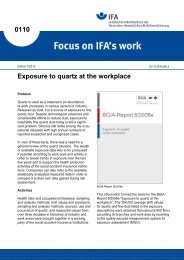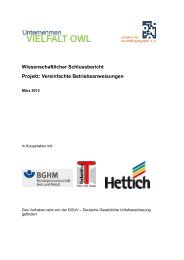Effectiveness of measures to prevent needlestick injuries among ...
Effectiveness of measures to prevent needlestick injuries among ...
Effectiveness of measures to prevent needlestick injuries among ...
You also want an ePaper? Increase the reach of your titles
YUMPU automatically turns print PDFs into web optimized ePapers that Google loves.
4 Intervention program evaluation<br />
recapping block [71]. Also in the category <strong>of</strong> “assistive devices” is the Suture Mate, a<br />
small plastic device that contains an abrasive surface for cleaning needles, a sponge<br />
used <strong>to</strong> embed needles when not in use, and a cutting slot <strong>to</strong> assist in knot tying dur-<br />
ing surgery [72].<br />
Goldwater et al. introduced voluntary use <strong>of</strong> a needle guard <strong>to</strong> a medical labora<strong>to</strong>ry<br />
with approximately 70 employees [69]. On a typical day, between 1,000 and 1,100<br />
venipunctures were carried out. NSI reports during 32 months following introduction <strong>of</strong><br />
the guard were collected via a passive system, and comparisons were made between<br />
the NSI rates <strong>among</strong> users (n = 47) and non-users (23) <strong>of</strong> the needle guard. The aver-<br />
age monthly NSI rate for needle guard users was 1/16,100 venipunctures (0.006 %),<br />
none due <strong>to</strong> recapping. Non-users were injured 1/3,739 venipunctures (0.03 %).<br />
The major problem with this evaluation stems from voluntary use <strong>of</strong> the needle guard,<br />
and associated potential for bias due <strong>to</strong> differences in work practices between the user<br />
and non-user groups. Although no statistical analyses were presented by Goldwater<br />
et al., and no attempt was made <strong>to</strong> assess or control for potential confounding, the<br />
authors concluded that the needle guard was effective at <strong>prevent</strong>ing NSI <strong>among</strong> phle-<br />
bo<strong>to</strong>mists [69].<br />
Based in part on the findings <strong>of</strong> Goldwater et al., Whitby et al. adopted the needle<br />
guard system at the Princess Alexandria Hospital <strong>of</strong> Australia. Contrary <strong>to</strong> the previous<br />
findings, Whitby et al. observed an increased risk <strong>of</strong> needle stick following adoption <strong>of</strong><br />
the needle guard and associated training [70]. Injury reports were collected through a<br />
passive surveillance system, supplemented by questionnaires from approximately 25 %<br />
<strong>of</strong> the hospital staff that allowed for an assessment <strong>of</strong> underreporting rates. The<br />
authors determined that the baseline rate <strong>of</strong> reporting <strong>of</strong> NSI (i.e., prior <strong>to</strong> introduction<br />
<strong>of</strong> the needle guard) was approximately 36 %. After implementation <strong>of</strong> the interven-<br />
tion, which included safety training, reporting rates rose <strong>to</strong> nearly 75 %. This difference<br />
in reporting practices could have contributed <strong>to</strong> the observed increase in NSI risk asso-<br />
ciated with use <strong>of</strong> the needle guard. In addition <strong>to</strong> changes in underlying reporting<br />
rates, the Whitby et al. program included concurrent introduction <strong>of</strong> a new lancet that<br />
was not compatible with the needle guard. This new lancet could have minimized any<br />
protective effect the needle guard may have incurred, and the introduction <strong>of</strong> more<br />
Report „Needlestick <strong>injuries</strong>“ 46


